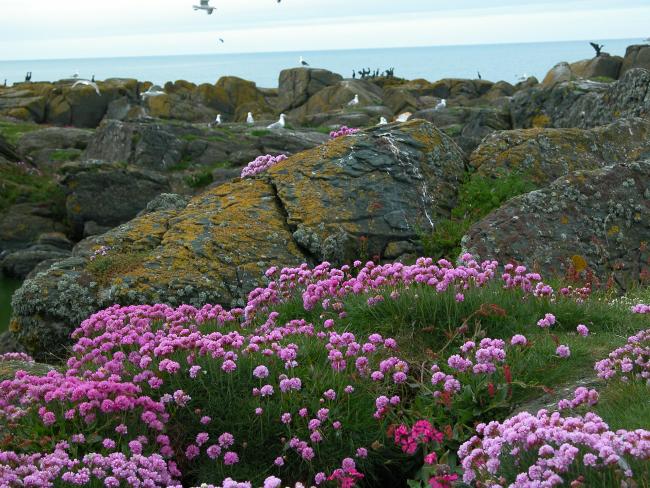Rott-Håstein-Kjør
Rott-Håstein-Kjør
- Country:
- Norway
- Site number:
- 1952
- Area:
- 10,721.8 ha
- Designation date:
- 12-11-2010
- Coordinates:
- 58°54'54"N 05°29'04"E
Carousel
CarouselMaterials presented on this website, particularly maps and territorial information, are as-is and as-available based on available data and do not imply the expression of any opinion whatsoever on the part of the Secretariat of the Ramsar Convention concerning the legal status of any country, territory, city or area, or of its authorities, or concerning the delimitation of its frontiers or boundaries.
This Site includes a large number of small islands, skerries and islets surrounded by shallow seas. Several islands have shallow ponds and lakes with saltwater influence; the vegetation cover is mostly sparse. The highly diverse marine ecosystems harbour extensive areas of shell sand and kelp (Laminaria hyperborean), an important habitat for large numbers of breeding common seal (Phoca vitulina) and grey seal (Halichoerus grypus). The Site is an important staging, moulting and breeding area for seabirds including the highest national population of breeding European shag (Phalacrocorax aristotelis), moulting common eider (Somateria mollissima) and several species such as the vulnerable Atlantic puffin (Fratercula arctica), black guillemot (Cepphus grille), and the common guillemot (Uria aalge). The Site is part of the earliest prehistoric settlement area in Norway. The largest island, Rott, has active farmland and some deciduous forest, and its 4,000-year-old farming-fishing tradition lives on. The island is used for boat recreation and there are a few cabins. Extensive leisure fishing and boat-related outdoor life might cause some disturbance to breeding seabirds.
- Biotope Protected Area (Sanctuary)
- Nature Reserve - Kjørholmane
- NO1952RIS_2305_en.pdf


